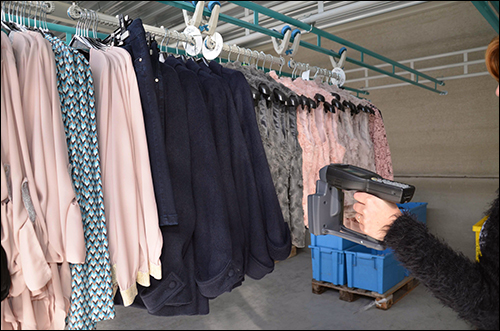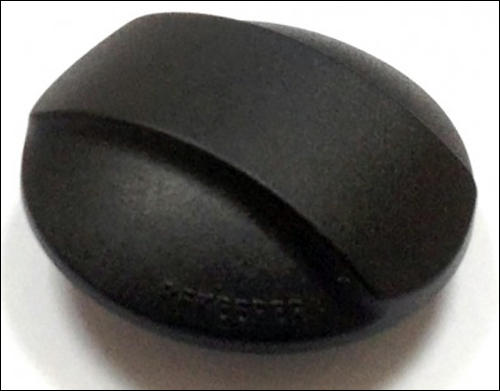Oct 07, 2015Belgian fashion retailer GIKS Mode plans to open its seventh RFID-enabled store in February 2016, according to Stefaan Allemeersch, the company's CEO and owner. The firm has already deployed a radio frequency identification system at its distribution center and six stores to track its inventory from the DC through to the point of sale (POS).
GIKS Mode sells fashion apparel from a variety of brands at its stores located across Belgium. The company sought an RFID system that would enable it to better manage its inventory counts, obtain supply chain visibility and ensure that goods were replenished so that no product went out of stock.

Stefaan Allemeersch, GIKS Mode's CEO and owner, will discuss the details of the deployment during a presentation at RFID Journal LIVE! Europe, which will be held in London on Nov. 10.
The company opted for an RFID inventory-monitoring solution with electronic article surveillance (EAS) functionality, consisting of RFKeeper's Dual EAS software, EAS-RFID hard tags and reader detacher, as well as Nordic ID's Merlin handheld computer with a built-in ultrahigh-frequency (UHF) RFID reader.
GIKS Mode had been interested in RFID solutions for tracking its inventory, but had found most solutions too expensive for the company's purposes. Vlamms Instituut voor de Logistiek (the Flemish Institute of Logistics)—a Belgian government organization that aims to increase companies' competitiveness in the area of logistics—recently advocated that retailers adopt RFID technology for greater supply chain accuracy, and GIKS Mode was interested in following that recommendation.
As GIKS was considering its options, systems integrator Resatec contacted the company and recommended an RFKeeper solution intended to provide a fast and non-disruptive installation. The system includes software that Resatec described as plug-and-play. Allemeersch says he spoke with his company's enterprise resource planning (ERP) software provider, which indicated that the solution would not be difficult to integrate with the existing software.
RFKeeper's T1009 Dual AM-RFID Round Tag is a reusable hard tag that can be attached to garments for both tracking via RFID and theft prevention via acousto-magnetic (AM) EAS technology, according to Zack Shrem, RFKeeper's sales and business development VP.
When goods are received at GIKS' DC in the city of Waregem, staff members there use a Merlin handheld to scan the bar code on each garment's label. They pair that data with an EPC UHF RFID number encoded to the T1009's built-in passive UHF RFID transponder, and attach the hard tag to the garment. The Merlin reader forwards the collected read data to the RFKeeper software and, ultimately, to the ERP system, thereby creating a record of what has been received. The item is then stored in the DC until it is shipped in response to a store's order.

One unexpected benefit of this process, Allemeersch reports, has been that workers can now test each bar-code label before a garment reaches a store. In the past, he explains, an erroneous or faulty bar-code label, such as one that couldn't be scanned, wasn't usually discovered until it reached the point of sale.
In late October, GIKS also intends to install a fixed RFID reader gate at the distribution center to make tag reading automatic.
When an item is received at one of the six stores, workers use Merlin handhelds to interrogate the tags of all items in the boxes or on racks that they receive. That information is then updated in the ERP system, via RFKeeper software, indicating that those goods are now in the store.
The garments are then placed on the sales floor, and employees can conduct periodic inventory checks using the same handheld reader.
When a customer wishes to purchase an item, Shrem explains, a sales associate utilizes an RFKeeper POS RFID Detacher to remove the T1009 tag from the garment. At that time, the device reads the unique ID number encoded to the T1009's RFID transponder, and the ERP software is updated to indicate that the item has been purchased. This data can then prompt the ERP software to create an order for replenishment.
The system, which was installed at the DC and six stores during the course of a single week, was taken live in July. Since that time, Allemeersch says, it has reduced errors and made inventory management easier and more accurate. Prior to deploying the RFKeeper system, the company conducted a full inventory check at all stores and the distribution center only once annually, typically at a cost of €12,000 ($13,500) and multiple days of manual counting. That cost should be virtually eliminated, he says, since each store's managers will be able to accomplish the same thing on a weekly basis in about 1.5 hours.
The Merlin readers, Shrem reports, can count 30,000 items within about 45 minutes.
The stores have overcome some initial RFID reading challenges by rearranging the way in which goods are packed and shipped, in order to ensure that the transponders can be read reliably. For instance, the fashion trend in Belgium this year is toward clothes made with Lurex, a metallic yarn that can interfere with RFID tag reads. For that reason, some items are shipped on hangers on racks, which makes the RFID-reading process more reliable.
Shrem says the stores now have 99 percent of their goods tagged.
The system has decreased customer checkout time by up to 50 percent, the company reports, since bar-code scanning is not required, resulting in shorter lines. Another benefit of the system has been a better understanding of what has been stolen, so that any pilfered items can be reordered. In some cases, thieves will take a garment to a dressing room and remove its T1009 hard tag. If staff members later find that tag in the dressing room, they can read its RFID transponder and determine what has been removed.



